CFP: Africa and the World of Comics: Past and Present
CFP: ImageTech: Comics and Materiality
CFP: Lewis Trondheim
CFP: Manga Nexus: Movement, Stillness, Media
Vortrag „KZ und Comics“ in Bochum
 Am 28. November spricht Markus Streb zum Thema „KZ und Comics“ in der Bochumer Bar Goldkante. Der Fokus wird dabei auf frühen Darstellungen nationalsozialistischer Konzentrationslager in amerikanischen Comics liegen.
Am 28. November spricht Markus Streb zum Thema „KZ und Comics“ in der Bochumer Bar Goldkante. Der Fokus wird dabei auf frühen Darstellungen nationalsozialistischer Konzentrationslager in amerikanischen Comics liegen.
Kurzbeschreibung:
„Die Darstellung nationalsozialistischer Verbrechen in Comics hat spätestens seit der Veröffentlichung von Art Spiegelmans bahnbrechendem Werk Maus viel Beachtung gefunden.
Insbesondere nationalsozialistische Konzentrationslager wurden jedoch schon zeitgenössisch in Comics dargestellt. Im so genannten „Golden Age“ der amerikanischen Comics, das von 1938 bis 1955 reichte, fanden sich solche Darstellungen besonders in Superhelden-, Kriegs-, Abenteuer-, und Horrorcomics.
Im Vortrag wird gezeigt, auf welche Weise Konzentrationslager in amerikanischen Comics der 1940er und 1950er Jahre dargestellt wurden. Diese Darstellungen werden in Bezug zu dem gesetzt, was die US-amerikanische Gesellschaft über nationalsozialistische Verbrechen wissen konnte oder wollte. Es wird veranschaulicht, welche Rolle die Darstellung von Jüdinnen und Juden dabei spielt. Dabei werden wiederkehrende Motive, wie auch die Entstehungsgeschichte einzelner Comics vorgestellt.“
Monitor 35: Neue Publikationen 2017
Im Monitor werden in unregelmäßigen Abständen aktuelle Publikationen aus den letzten 6 Monaten vorgestellt, die für die Comicforschung relevant sein könnten. Die kurzen Ankündigungstexte dazu stammen von den jeweiligen Verlagsseiten. Haben Sie Anregungen oder Hinweise auf Neuerscheinungen, die übersehen worden sind und hier erwähnt werden sollten? Das Team freut sich über eine Mail an redaktion@comicgesellschaft.de. -> Zu früheren Monitoren.
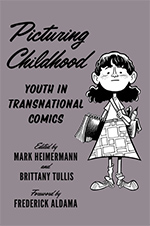
Picturing Childhood:
Youth in Transnational Comics
Mark Heimermann und Brittany Tullis (Hrsg.)
University of Texas Press
280 Seiten
ISBN 978-1-4773-1162-2 (Hardcover)
~$ 27,95
März 2017
Verlagsseite
Comics and childhood have had a richly intertwined history for nearly a century. From Richard Outcault’s Yellow Kid, Winsor McCay’s Little Nemo, and Harold Gray’s Little Orphan Annie to Hergé’s Tintin (Belgium), José Escobar’s Zipi and Zape (Spain), and Wilhelm Busch’s Max and Moritz (Germany), iconic child characters have given both kids and adults not only hours of entertainment but also an important vehicle for exploring children’s lives and the sometimes challenging realities that surround them. Bringing together comic studies and childhood studies, this pioneering collection of essays provides the first wide-ranging account of how children and childhood, as well as the larger cultural forces behind their representations, have been depicted in comics from the 1930s to the present. The authors address issues such as how comics reflect a spectrum of cultural values concerning children, sometimes even resisting dominant cultural constructions of childhood; how sensitive social issues, such as racial discrimination or the construction and enforcement of gender roles, can be explored in comics through the use of child characters; and the ways in which comics use children as metaphors for other issues or concerns. Specific topics discussed in the book include diversity and inclusiveness in Little Audrey comics of the 1950s and 1960s, the fetishization of adolescent girls in Japanese manga, the use of children to build national unity in Finnish wartime comics, and how the animal/child hybrids in Sweet Tooth act as a metaphor for commodification.
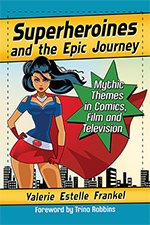
Superheroines and the Epic Journey:
Mythic Themes in Comics, Film and Television
Valerie Estelle Frankel
McFarland
296 Seiten
ISBN 978-1-4766-6878-9 (Paperback)
~$ 19,99
März 2017
Verlagsseite
The heroine’s journey echoes throughout ancient legend. Each young woman combats her dark side and emerges stronger. This quest is also a staple of American comic books. Wonder Woman with semi-divine powers gives us a new female-centered creation story. Batgirl, Batwoman and Black Widow discover their enemy is the dark mother or shadow twin, with the savagery they’ve rejected in themselves. Supergirl similarly struggles but keeps harmony with her sister. From Jessica Jones and Catwoman to the new superwomen of cutting-edge webcomics, each heroine must go into the dark, to become not a warrior but a savior. Women like Captain Marvel and Storm sacrifice all to join the ranks of superheroes, while their feminine powers and dazzling costumes reflect the most ancient tales.
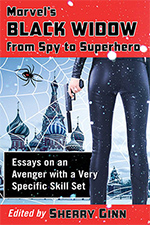
Marvel’s Black Widow:
From Spy to Superhero
Sherry Ginn (Hrsg.)
McFarland
188 Seiten
ISBN 978-0-7864-9819-2 (Paperback)
~$ 19,99
März 2017
Verlagsseite
First appearing in Marvel Comics in the 1960s, Natasha Romanoff, a.k.a. Black Widow, was introduced to movie audiences in Iron Man 2 (2010). Her character has grown in popularity with subsequent Marvel films, and fans have been vocal about wanting to see Black Widow in a titular role. Romanoff has potent appeal: a strong female character who is not defined by her looks or her romantic relationships, with the skill set of a veteran spy first for the KGB, then for S.H.I.E.L.D. This collection of new essays is the first to examine Black Widow and her development, from Cold War era comics to the Marvel Cinematic Universe.
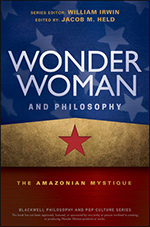
Wonder Woman and Philosophy:
The Amazonian Mystique
Jacob M. Held (Hrsg.)
Wiley Blackwell
240 Seiten
ISBN 978-1-119-28075-0 (Paperback)
~$ 14,40
Mai 2017
Verlagsseite
Wonder Woman and Philosophy: The Amazonian Mystique explores a wide range of philosophical questions surrounding the most popular female superhero of all time, from her creation as feminist propaganda during World War II up to the first female lead in the blockbuster DC movie-franchise: The first book dedicated to the philosophical questions raised by the complex and enduringly iconic super-heroine; Fighting fascism with feminism since 1941, considers the power of Wonder Woman as an exploration of gender identity and also that of the human condition – what limits us and what we can overcome; Confronts the ambiguities of Wonder Woman, from her roles as a feminist cause and fully empowered woman, to her objectification as sexual fantasy; Topics explored include origin stories and identity, propaganda and art, altruism and the ethics of care, Amazonians as transhumanists, eroticism and graphic novels, the crafting of a heroine, domination, relationships, the ethics of killing and torture, and many more.
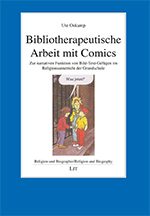
Bibliotherapeutische Arbeit mit Comics:
Zur narrativen Funktion von Bild-Text-Gefügen im Religionsunterricht der Grundschule
Ute Oskamp
LIT Verlag
280 Seiten
ISBN 978-3-643-13372-4 (Paperback)
~€ 34,90
Mai 2017
Verlagsseite
as vorliegende Buch stellt eine Vernetzung von Religionspädagogik, Bibliotherapie und Comicforschung vor und ist damit ein Novum in der Innovation des Religionsunterrichts. Es geht um die Bedeutung des Bildes für religiöse Lernprozesse, um umfassende Ausführungen zur Bibliotherapie sowie zur Religionspädagogik und Comictheorie. Drei Unterrichtseinheiten mit kinderliterarischen Comics verweisen darauf, dass mit der Verbindung von Bild und Text differenzierte Lernangebote für heterogene Lerngruppen realisiert werden können. Im Rahmen einer explorativen Studie werden ermutigende Lernprozesse belegt.
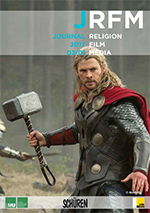
Drawn Stories, Moving Images:
Comics and Comic Movie Adaptations
JRFM – Journal for Religion, Film and Media (1/2017)
Christian Wessely und Alexander D. Ornella (Hrsg.)
Schüren
216 Seiten
ISBN 978-3-7410-0064-5 (Paperback)
~€ 19,90
Mai 2017
Verlagsseite
The comic transcends the merely entertaining, and fans of comics become engaged and invested in the field through a range of activities. Major cities host regular comic conventions, attracting hundreds of thousands of attendees each year, who search for special issues of their favourite comic-book series, meet artists, attend workshops and buy merchandise. Many fans do not stop at just attending conventions; they do so dressed as their favourite comic characters or wearing badges, buttons, T-shirts or sweaters with images of those characters on them. In other words: many fans do ot merely consume comic books; rather, they arrange a considerable part of their lives around them and in some cases even embody their heroes, that is, they copy their behaviour and their language. The comic universe, the comic books and the range of activities emerging out of them and around them become a meaningful universe for fans.
Ringvorlesung „Migration und Krieg“ in Düsseldorf
 Seit Oktober veranstaltet der Arbeitskreis Graphisches Erzählen der Heinrich-Heine-Universität Düsseldorf eine Ringvorlesung zum Thema „Migration und Krieg in Graphischen Erzählungen“. Unter den sieben Vortragenden sind auch ComFor-Mitglieder zu finden; als Nächstes spricht Dietrich Grünewald zum Thema Migration im Comic.
Seit Oktober veranstaltet der Arbeitskreis Graphisches Erzählen der Heinrich-Heine-Universität Düsseldorf eine Ringvorlesung zum Thema „Migration und Krieg in Graphischen Erzählungen“. Unter den sieben Vortragenden sind auch ComFor-Mitglieder zu finden; als Nächstes spricht Dietrich Grünewald zum Thema Migration im Comic.
Programm:
6. November 2017
Dietrich Grünewald, „Der Traum vom besseren Leben. Das Thema Migration im Comic“
20. November 2017
Dr. Michael Heinze, „‚What happens in the gutter?‘ – Formale Aspekte in Joe Saccos Journalism„
4. Dezember 2017
Marina Ortrud Hertrampf, „Harraga en bande dessinée. Mittelmeer-Flüchtlinge in frankophonen Comics und Graphic Novels“
8. Januar 2018
Monika Schmitz-Emans, „Ziviles Leben in Kriegszeiten. Graphische Erzählungen aus dem Alltag der Weltkriege“
22. Januar 2018
Stephan Köhn, „Das Schicksal der Vertriebenen – Manshūkoku und das Ende der Kolonialpolitik in Satonaka Machikos Mädchenmanga Und morgen strahlt wieder die Sonne„
BERLINER COMIC-KOLLOQUIUM IM WS 2017/18

Auch im Wintersemster 2017/18 findet ab heute wieder das Berliner Comic-Kolloquium unter der Organisaton von Matthias Harbeck, Linda-Rabea Heyden und Marie Schröer statt. Auf der Kolloquiums-Homepage wurde nun auch das vorläufige Programm veröffentlicht. Die Runde tagt für gewöhnlich immer Mittwochs (heute zum Auftakt ausnahmsweise Montags, am 28.11. Dienstags) um 18:00 c.t. in der Mohrenstraße 40/41, Raum 211 der Humboldt-Universität. Interessierte sind herzlich willkommen.
Vorläufige Programmplanung:
(für Updates bitte die Ankündigungen auf der Homepage beachten)
30. Oktober: MARIE SCHRÖER
Le Blog BD zwischen Seifenoper und Subversion
8. November: NELLE CERNERO
Authentizitätserzeugung in Comic-Autobiografien: Alison Bechdels Fun Home und Marjane Satrapis Persepolis
15. November: JEFF THOSS
„Through the Proscenium Arch of the Comic Panel“: Intermedial Frames in Bryan Talbot‘s Alice in Sunderland
28. November (Achtung: diesmal an einem Dienstag und auf Englisch!): SAKSHI WASON
Regarding Two Ruptures In India: The Partition (1947) and The Emergency (1975-77)
17. Januar: CHRISTIAN A. BACHMANN
Teleskop & Co. Techniken des Betrachters in Karikatur und Comic um 1900
24. Januar: LINDA-RABEA HEYDEN
Großer Text in kleinen Bildern. Goethes Faust als Comic
31. Januar: MERLE KOCH
Vom Schlaf erfundene Comics – die Darstellung von Traumerinnerungen
7. Februar:: MATTHIAS HARBECK
Das Andere in amerikanischen Mainstream-Comics – einige quantitative Trends
Ausstellung „Lorenzo Mattotti. Imago“
Das Cartoonmuseum Basel ehrt den mit seinen intensiven, mit Kreide und Farbstift gemalten Comicalben weltbekannt gewordenen Künstler Lorenzo Mattotti mit einer Retrospektive. Begleitend erscheint die erste deutschsprachige Publikation zur Ligne fragile – eine langjährige Serie von freien, surrealen Tuschezeichnungen des in Paris lebenden Zeichners, Malers und Illustrators.